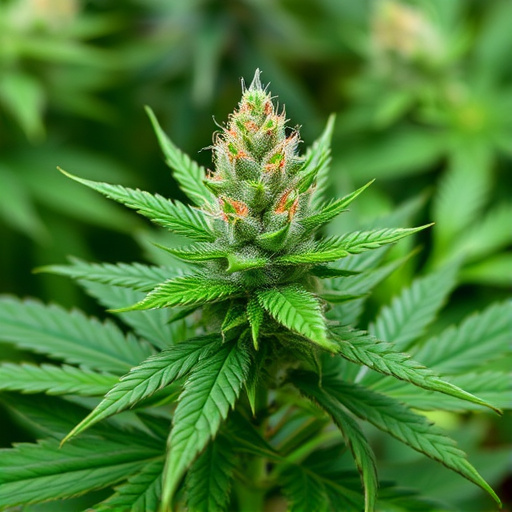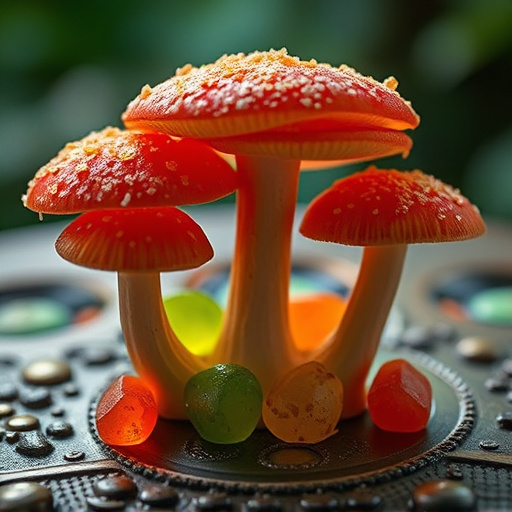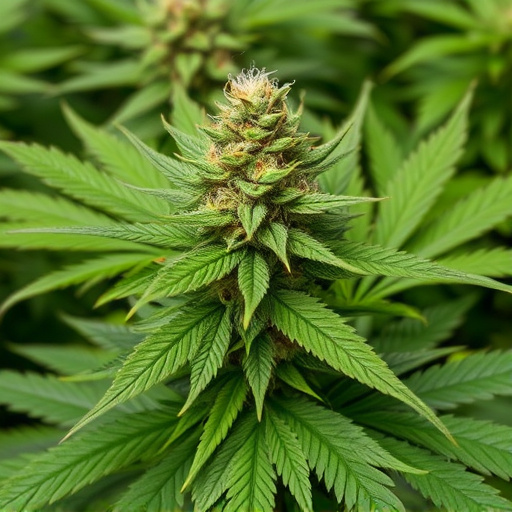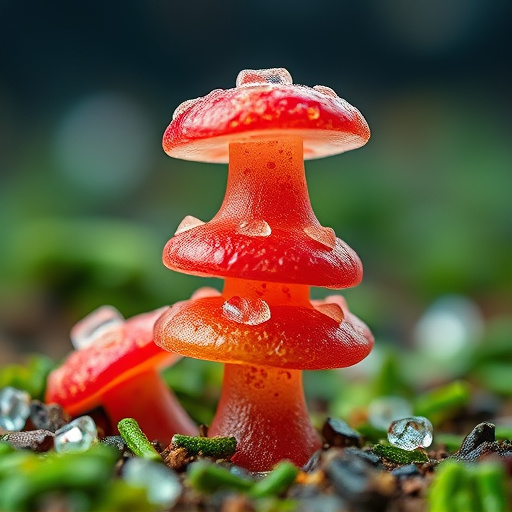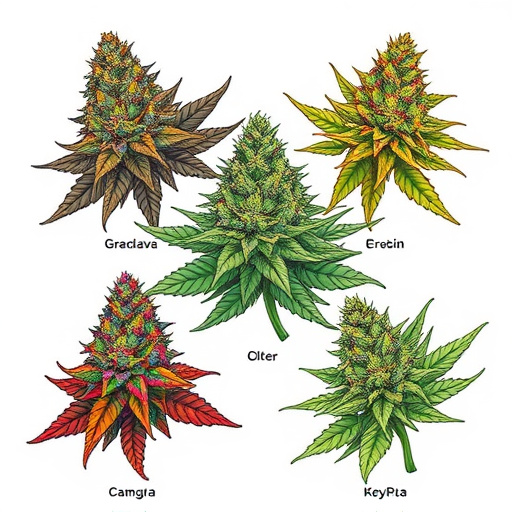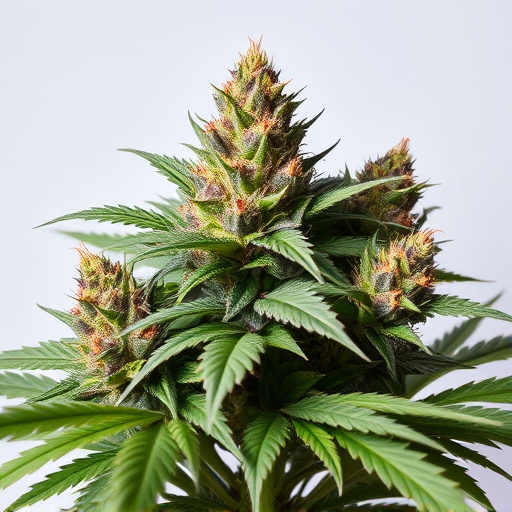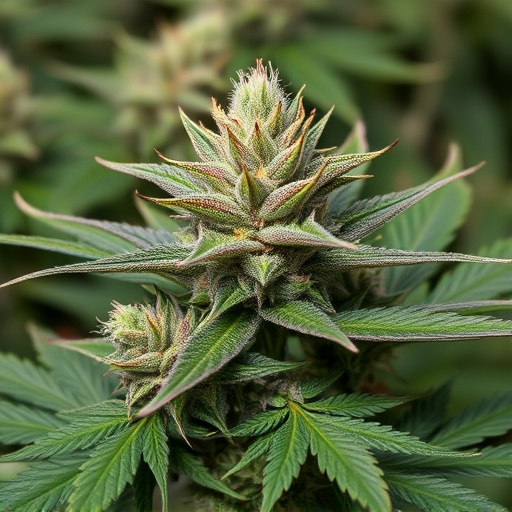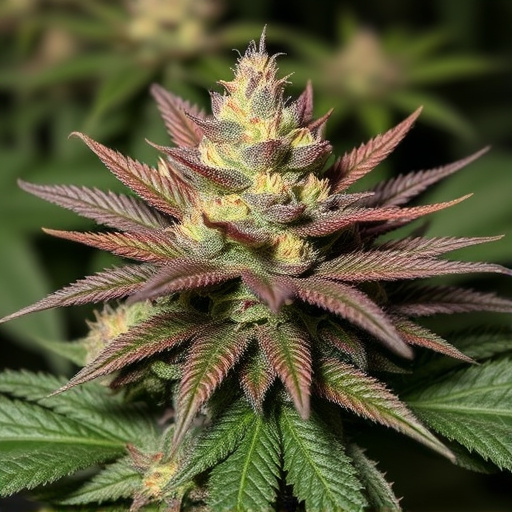Indica dominant cannabis strains offer unique interactions with dopamine and serotonin, key neurotransmitters for mood regulation and reward. While they can induce euphoria through dopamine stimulation, chronic use may alter receptors, potentially leading to dependence. Indica's calming effects gently modulate dopamine levels, improving stress and anxiety relief. With higher THC and lower CBD content, these strains boost serotonin activity, positively influencing mood and well-being. Their complex blend of cannabinoids and terpenes enables them to suppress or enhance neurotransmitter release, offering therapeutic benefits for mental health conditions without intense highs.
Cannabis has long been known for its impact on brain chemistry, particularly with regard to neurotransmitters like dopamine and serotonin. This article delves into the intricate relationship between cannabis consumption, specifically focusing on how it affects these key players in our neural system. We explore the role of dopamine in reward and motivation, while also investigating the effects of indica dominant strains on serotonin levels, known for their calming and relaxing properties.
Understanding this dynamic is crucial, especially with the growing popularity of indica-dominant cannabis varieties.
- Cannabis and Neurotransmitters: The Role of Dopamine
- Indica Dominant Strains: Their Effect on Serotonin Levels
- Balancing Act: How Cannabis Can Regulate Dopamine and Serotonin Release
Cannabis and Neurotransmitters: The Role of Dopamine
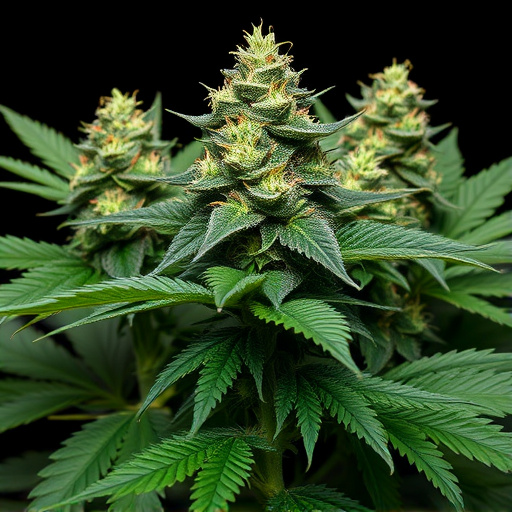
Cannabis has long been known for its impact on the human brain, particularly in relation to neurotransmitters like dopamine and serotonin. These chemicals play a crucial role in mood, motivation, reward, and pleasure—making them key targets of many substances, including cannabis. Indica dominant strains, with their balanced profile of cannabinoids, have been shown to interact with these neurotransmitter systems in unique ways.
Dopamine, often dubbed the “feel-good” neurotransmitter, is heavily involved in rewarding behaviors. Cannabis stimulates dopamine release, similar to other addictive substances, which can lead to feelings of euphoria and heightened pleasure. However, chronic use can alter dopamine receptors, affecting long-term mood regulation and potentially leading to dependence. Indica strains, known for their relaxing and sedative effects, may modulate dopamine levels more gently than sativa strains, offering potential therapeutic benefits for managing stress and anxiety while mitigating risks associated with overstimulation.
Indica Dominant Strains: Their Effect on Serotonin Levels
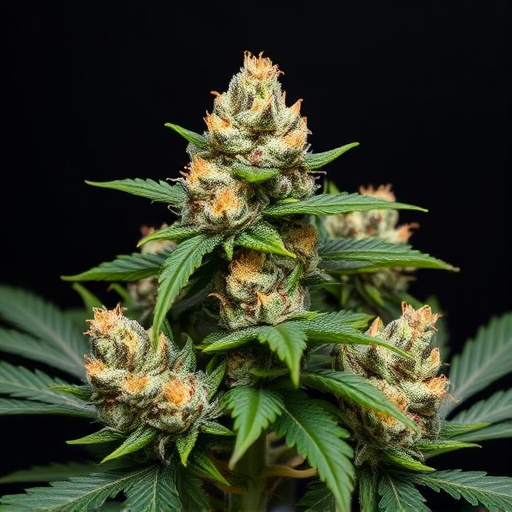
Indica dominant strains of cannabis are known for their calming and relaxing effects, which are largely attributed to their impact on serotonin levels in the brain. Serotonin, often referred to as the “feel-good” hormone, plays a crucial role in regulating mood, appetite, and sleep—all areas that can be influenced by these strains. Research suggests that indica-dominant cannabis varieties tend to increase serotonin activity, leading to potential improvements in mood and overall well-being. This effect is particularly notable for individuals seeking relief from anxiety or insomnia.
These strains often contain higher levels of tetrahydrocannabinol (THC) and lower levels of cannabidiol (CBD), which can enhance the binding of cannabis compounds to serotonin receptors. The result is a more pronounced impact on serotonin signaling, potentially offering therapeutic benefits for specific conditions. However, it’s important to note that while indica dominant strains may provide temporary relief, they are not a substitute for professional medical advice or treatment for mental health concerns.
Balancing Act: How Cannabis Can Regulate Dopamine and Serotonin Release
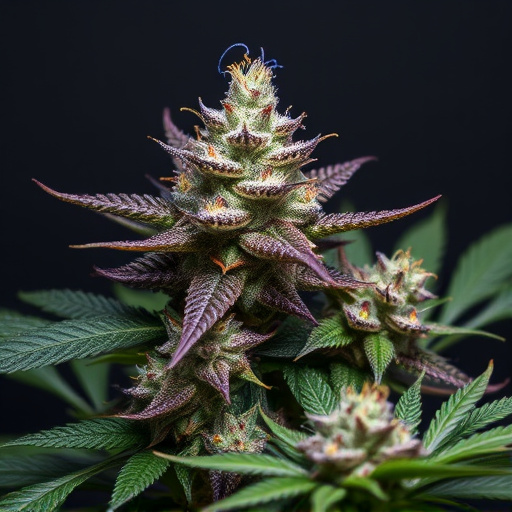
Cannabis plants contain a complex mix of compounds, including cannabinoids and terpenes, that work together to influence the brain’s chemistry. This balance is particularly crucial when it comes to regulating dopamine and serotonin, two neurotransmitters vital for reward, pleasure, motivation, and mood. Indica dominant strains, known for their calming and relaxing effects, often have higher levels of cannabidiol (CBD) and certain terpenes that can subtly modulate the release of these chemicals.
By interacting with the endocannabinoid system, cannabis can enhance or suppress dopamine and serotonin release depending on the strain composition, individual biochemistry, and context of use. For example, some indica strains might stimulate a moderate increase in dopamine, promoting feelings of euphoria and relaxation without causing intense highs. Conversely, they may also help regulate serotonin levels, offering potential relief from anxiety and depression symptoms by balancing these neurotransmitters.
In conclusion, cannabis’s impact on neurotransmitters like dopamine and serotonin is complex. Indica dominant strains, known for their calming effects, can increase serotonin levels, contributing to feelings of well-being and relaxation. Meanwhile, cannabis interacts with dopamine systems, enhancing pleasure and reward responses. Understanding these mechanisms helps shed light on the potential therapeutic benefits and challenges associated with cannabis use. Further research into how different strains modulate neurotransmitter release is crucial for harnessing their therapeutic potential while mitigating risks.

